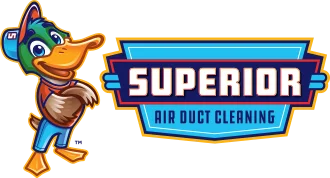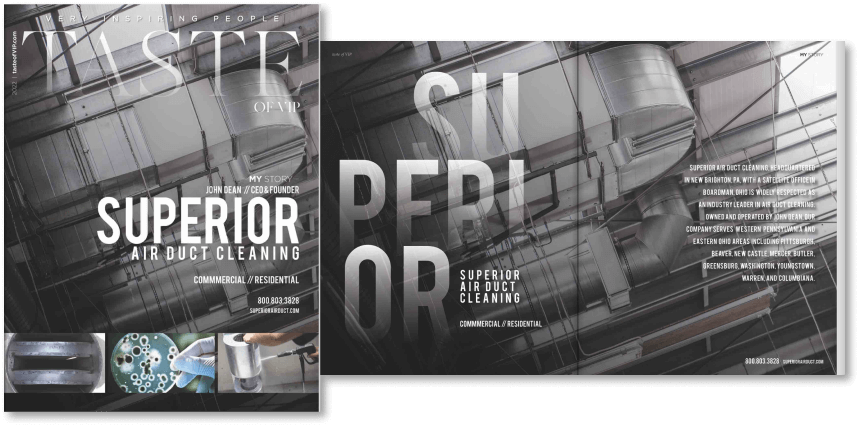Mold growth in your air ducts is a silent threat that could jeopardize the health and comfort of your family. We understand the significance of maintaining a clean and mold-free air duct system. Mold in your air ducts can cause a variety of health issues, including allergies and respiratory problems, as well as compromise the efficiency of your HVAC system. To protect your home and family, knowing how to prevent mold growth in your air ducts and promote a healthier living environment is important.
Superior Air Duct Cleaning will walk you through the essential steps and preventive measures to keep your air ducts mold-free. By following these expert tips, you’ll be well-equipped to maintain optimal indoor air quality and ensure the longevity of your HVAC system.
Understanding Mold Growth In Air Ducts
Before getting into prevention techniques, it’s crucial to understand the factors contributing to mold growth in air ducts. Mold spores can thrive in dark, damp, and humid conditions. When these conditions are present in your air ducts, mold can grow unnoticed by homeowners. As your HVAC system circulates air throughout your home, it can also distribute mold spores, potentially causing allergic reactions and respiratory issues for occupants.
Keep Your HVAC System Well-Maintained
Regular HVAC maintenance is the first line of defense against mold growth in your air ducts. Schedule an annual inspection with a trusted professional to check your system for any signs of mold or other issues. This inspection should include cleaning and replacing filters, inspecting and cleaning evaporator coils and drain pans, and checking for proper drainage. By maintaining your HVAC system, you can ensure optimal performance and prevent conditions that encourage mold growth.
Control Indoor Humidity Levels
High humidity levels can create a conducive environment for mold growth in your air ducts. To prevent this, it’s essential to maintain indoor humidity levels. Here are some tips to help control humidity levels in your home:
- Use A dehumidifier: Purchasing a dehumidifier can effectively lower indoor humidity levels and discourage mold growth.
- Proper Ventilation: Ensure your home is adequately ventilated, paying particular attention to areas where moisture is generated, such as bathrooms, kitchens, and laundry rooms.
- Exhaust Fans: Install and use exhaust fans in bathrooms and kitchens to expel moisture and reduce humidity levels.
- Air Conditioning: Use air conditioning to help maintain a comfortable indoor environment and control humidity levels. Make sure to clean and change your AC filters regularly.
Seal And Insulate Your Air Ducts
Properly sealing and insulating your air ducts can help prevent condensation, which can encourage mold growth. Ensure that the ducts are sealed at all connections and joints to avoid air leaks, preventing warm and cold air from mixing and causing condensation. Properly insulating your ducts, especially in unconditioned spaces such as attics and crawlspaces, can also reduce the risk of condensation. This step not only prevents mold growth but also helps improve the overall efficiency of your HVAC system.
Schedule Regular Air Duct Cleanings
Regular professional air duct cleaning is essential for removing dust, debris, and potential mold growth from your duct system. Keeping your air ducts clean can maintain a healthier indoor environment and minimize the risk of mold-related issues. It’s recommended to schedule air duct cleaning at least once every two to five years. However, the frequency may vary based on factors such as the local climate, occupancy, and presence of pets or allergies in the household.
What To Do If You Suspect Mold In Your Air Ducts
If you suspect mold growth in your air ducts, acting promptly to minimize potential health risks and damage to your HVAC system is essential. Here are the steps to take:
- Investigate: Look for visible signs of mold growth in your air vents or around your HVAC system. This may include moldy odors, visible mold on vent covers, or black, green, or white specks on duct surfaces.
- Contact A professional: If you find any signs of mold growth, it’s important to contact a professional air duct cleaning service. They can accurately assess the situation and determine the best course of action for remediation.
- Address The Root Cause: Mold growth often indicates an underlying issue, such as water leaks, high humidity levels, or poor ventilation. Identifying and addressing the root cause is important to prevent future mold growth.
Achieving Optimal Indoor Air Quality: Prevent Mold Growth In Your Air Ducts
Preventing mold growth in your air ducts is critical to ensuring a healthy living environment and maintaining the efficiency of your HVAC system. Following the steps outlined in this guide can effectively reduce the risk of mold-related issues and enjoy optimal indoor air quality. As a leading vent and dryer vent cleaning service provider in Pennsylvania, we pride ourselves on helping homeowners maintain a safe, clean, and comfortable home.
Don’t let mold growth in your air ducts compromise the health and well-being of your family. Contact us today to schedule a professional air duct cleaning in Beaver and surrounding areas. Our skilled technicians at Superior Air Duct Cleaning can expertly identify potential issues, provide effective remediation, and offer valuable advice on maintaining a mold-free air duct system.


